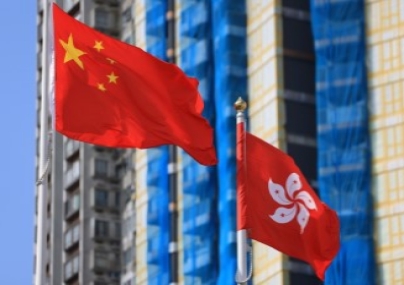Asia’s airline industry is booming as local competition heats up with fleet expansions, new routes and an array of financing options. “In terms of aircraft numbers, Asia-Pacific has become a bigger market than Europe, second only to North America, and the projections are that it will grow at a really fast rate,” says Saugata Mukherjee, an aviation finance specialist and asset and structured finance partner at Stephenson Harwood in Singapore. Southeast Asian low-cost carriers like AirAsia, Lion Air, and Cebu Pacific have driven much of the growth, placing orders for hundreds of Airbus A320s and Boeing 737s. VietJet Aviation Joint Stock Co, Vietnam’s first private airline, agreed last September to a provisional order for up to 92 Airbus jets worth $9 billion, while Singapore’s Tiger Aiways placed an order in March for 37 Airbus A320neo aircraft valued at $3.8 billion at list prices. “The established legacy carriers are under increasing pressure from low-cost carriers,” says Leo Fattorini, a partner in Bird & Bird’s international aviation group in Singapore.
Vietnam in particular is tipped to spark competition among airlines and manufacturers. Even as the nation’s local economy grows at about 5 percent – its slowest pace in 13 years – demand for domestic air travel is experiencing double-digit growth. The International Air Transport Association expects Vietnam to become the world’s third-fastest growing market for international passengers and freight next year, and second-fastest for domestic passengers. While this is likely to translate into a robust new source of business for aircraft makers like Boeing and Airbus, regional manufacturers like Canada’s Bombardier, Brazil’s Embraer, European joint venture ATR, Russia’s Sukhoi and Japan’s Mitsubishi Aircraft also stand to benefit.
Back to top
Carving out a niche
After flying under the radar for many years, manufacturers of smaller jet and propeller-driven passenger aircraft are gaining traction in Asia. Embraer forecast that the region will take delivery of 1,500 new jets of 70 to 130 seats over the next 20 years. That translates, it says, to a staggering $70 billion worth of business. The Singapore Airshow in February underscored this trend, with smaller aircraft makers picking up a slew of new orders. Thai low-cost carrier Nok Air said that it would order up to eight of Bombardier’s Q400 turboprop aircraft. ATR meanwhile, inked a deal to sell up to eight of its 72-600 aircraft to Thai carrier Bangkok Airways. It also agreed to sell 20 aircraft to leasing firm Dubai Aerospace Enterprise, with options for 20 more, in a deal valued at $1 billion. Substantial numbers of ATR aircraft are being acquired by airlines in Indonesia, Malaysia, the Philippines and Myanmar, where a lot of routes aren’t yet developed enough to warrant an Airbus A320 or a Boeing 737, says Fattorini. “These ATR aircraft are ideal for these countries. They are relatively fuel efficient, robust and versatile, and can fly into airports where perhaps some of the larger jets can’t,” adds Fattorini.
Growing demand for services to and between smaller second- and third-tier cities has created a unique market suited to smaller aircraft. In a country like India, where Airbus and Boeing aircraft have saturated the market with airlines like IndiGo, SpiceJet and GoAir, start-up carrier Air Costa, which began operations last October, is trying to carve out a niche for itself by connecting the smaller cities with Embraer jets. “You don’t need larger aircraft. Regional air services have enormous potential in India,” Ramesh Lingamaneni, chairman of Air Costa, told Reuters. In February, the airline ordered 50 jets valued at $2.94 billion from Embraer, in what was the aircraft maker’s first major Indian deal. “The Air Costa model of looking at secondary cities is a very interesting one. It is a trend that we have and will continue to see across the entire region,” says Mukherjee.
Importantly, for the likes of Embraer and ATR, the world’s two largest aircraft manufacturers do not make aircraft that compete in the below-130 seat segment. “Right now, there are two different markets for aircraft. If you look at Lion Air for example, they use their Boeing 737s for the bigger primary city connections, but they also have an ATR fleet which captures a different market segment,” says Mukherjee. There is, however, some overlap between markets. Bombardier’s C Series offers a competitive alternative to the Airbus A320 and Boeing 737, but it is still yet to make an impression in the Asian market, says Mukherjee.
Back to top
Financing options
As more carriers enter Asia’s lucrative aviation market, a range of financing options are readily available to fund fleet expansions. The choice of funding depends quite heavily on the carrier, says Fattorini. “Some of the top-tier established carriers still have very strong cash positions, despite increased pressure on their balance sheets. They often buy aircraft outright, or have the credit rating to be able to access loan finance at attractive rates,” says Fattorini.
For less-established carriers that do not boast the strongest balance sheets or the highest credit ratings, export credit agency (ECA) financing is often a preferred alternative. “Carriers typically start off with ECA financing because they either don’t have access to commercial funding, or they find commercial funding too expensive. But as they mature, commercial financiers come in and start helping them out, and their terms are usually more flexible than those offered by the ECA lenders,” says Mukherjee. For his part, Fattorini says that ECA finance has become more expensive and fallen slightly out of favour among airlines and lessors with stronger balance sheets as a result. But he adds that a lot of historic orders still exist that are being backed by ECAs, as well as hybrid ECA deals which, depending on the ECA involved, could either be pre-funded or refinanced in the capital markets.
As the market matures, lawyers say the range of financing will extend increasingly into the capital markets space. “Right now, money is cheap. But, if the pricing environment changes – and it will – you will see enhanced equipment trust certificate (EETC) issuances increasingly by non-U.S. issuers. Non-ECA-backed airline bond financings will possibly start to play a role in Asia as well in the medium term,” says Mukherjee.
Another alternative for airlines is leasing, which is gaining popularity in Asia as carriers look to avoid owning a large fleet in favour of leaner balance sheets. In 2011, leased planes accounted for 36.5 percent of the worldwide fleet, according to Boeing data, up from less than 15 percent 20 years earlier. “The generally accepted view is that leasing will increase to about 40 or 50 percent of the market in the not too distant future,” says Fattorini.
A number of new leasing companies too have entered the Asian market, keen to increase and develop their portfolios. “There is definitely more competition between lessors now, and this is good news for airlines. As can be expected, there has also been some amount of consolidation between lessors through M&A activity and it is possible that there will be some further activity as the market evens out,” says Mukherjee.
------------------------------------------------------------------------------------------------------------------------------------------------------------------------------------------------
Back to topShakeup for state carrier
VietJet Aviation Joint Stock Co, Vietnam’s first private airline, agreed last month to a provisional order for up to 92 Airbus jets worth $9 billion at list prices. The low-cost carrier is aiming for a stock market listing in either Hong Kong or Singapore in 2015 to fund the expansion, Managing Director Luu Duc Khanh said. VietJet plans to double its fleet by 2015 to 20 jets, and is speeding up work to get three joint ventures in the air, including one with an undisclosed carrier in Myanmar and another agreed with Thailand's KanAir, to operate in early 2014.
VietJet's bold expansion after less than two years in business could raise the stakes not only at home, but also in Southeast Asia’s fast-growing low-cost market, dominated by Malaysia’s AirAsia Bhd and Indonesia's Lion Air.
Those ambitious plans may have shaken state-run flag carrier Vietnam Airlines (VNA) into expediting its long-awaited initial public offering and fleet expansion. VNA dominates the local market and will increase its fleet by 28 percent to 101 aircraft by 2015. It has been preparing for an IPO in the second quarter of 2014.
Its fleet includes both Airbus and Boeing jets, and it has ordered the Boeing 787 Dreamliner and the Airbus A350. According to Boeing, VNA has existing orders for eight 787s and 11 more through leasing companies. The airline also has its hand in the low-cost market through a stake in JetStar Pacific, a joint venture with Australia's Qantas Airways. JetStar plans to more than triple its fleet of five Airbus A320s to 16 in the next few years, a spokesman says.
VietJet’s joint venture plans were therefore a smart move, says Timothy Ross, an air transport analyst at Credit Suisse in Singapore. “I can't imagine they have much on their balance sheet ... so in terms of building a new business, it's far better to give away some of the potential upside and invest less,” he says. JetStar has not been profitable and is likely to struggle as competition increases, Ross says, while VNA has not done itself any favours delaying privatisation. “We should have seen the Vietnam Airlines IPO three to five years ago, but it sat on its hands,” he says. “Competition in the airline industry is inevitable.”
------------------------------------------------------------------------------------------------------------------------------------------------------------------------------------------------
Traditionally, lessors call the shots on leasing agreements, especially when dealing with newer carriers, says Fattorini. “But with a number of new lessors in the market, especially those from China who are eager to quickly build up their portfolios, airlines have more options than in recent years. As a result they should be in a relatively stronger negotiating position,” he says. Airlines should consider their pressure points and not be afraid to push hard for positions which make their lives operationally easier. An experienced lessor will never compromise on its ability to quickly recover its asset in a default scenario but on issues such as maintenance and use covenants, there's likely to be much more flexibility, adds Fattorini.
For his part, Mukherjee thinks that a lessee negotiating contract terms also sends positive signals to the lessor. Lessors and lessees should pay attention to the operational or technical covenants of a lease. “When you maintain your fleet you have one standard and one technical team. If there is a higher standard on your operating lease you suddenly have a mismatch, which raises the standards that your technical team needs to have across the fleet,” says Mukherjee. “The technical team is not going to differentiate between the owned and leased aircraft because they use the same standard across the board. So from a lawyer’s perspective, you need to make sure that those covenants are as evenly set across the financing and leasing documents.”
In addition, Mukherjee highlights the aircraft return conditions of a lease as an important area for lessees to consider. “Lessors and lessees alike must ensure that the lessee's technical team are well versed in the maintenance and return conditions set out in the lease. Return conditions, in particular, should be negotiated and agreed in relative detail by the lessors’ and lessees’ technical teams. What you don’t want is for a mismatch in contractual expectations and what the lessee's technical team are capable of delivering. This is neither in the lessee's interest nor is it good news for the lessor. For example the lessor may have arranged a re-lease of the aircraft with a third party airline. A failure to redeliver on time will lead to losses, and while the lessor can try and claim back its losses from the defaulting airline, it does not present a pretty picture,” he says.
Back to top
Boom times ahead
As the rivalry among airlines and aircraft manufacturers intensifies in Asia, it is bringing with it an increasing volume of business to the handful of law firms in the region that have aviation finance and aircraft leasing expertise. Some carriers, lessors and financiers in Asia still use lawyers who are based in London or New York, says Fattorini. “This is surprising as there are a number of firms with the right expertise in this region, and it makes the logistics of doing a deal much easier.” But this could change rather quickly as more business flows into Asia. And in an industry as niche as aviation finance and aircraft leasing, on-the-ground experience in the region is vital. For the year ahead at least, especially in Southeast Asia, leasing companies, financial institutions and law firms with dedicated aviation finance specialists are poised to profit from a booming airline industry as low-cost carrier activity surges and regional aircraft makers come to the fore.
Back to top

